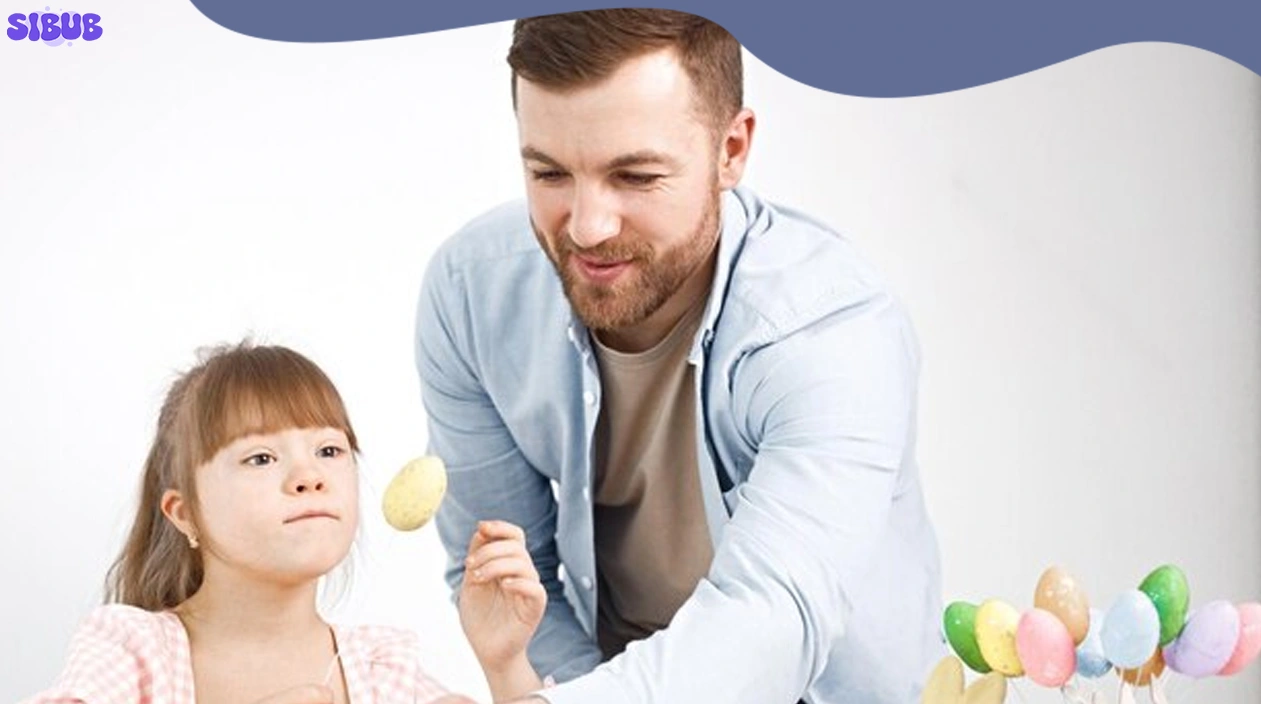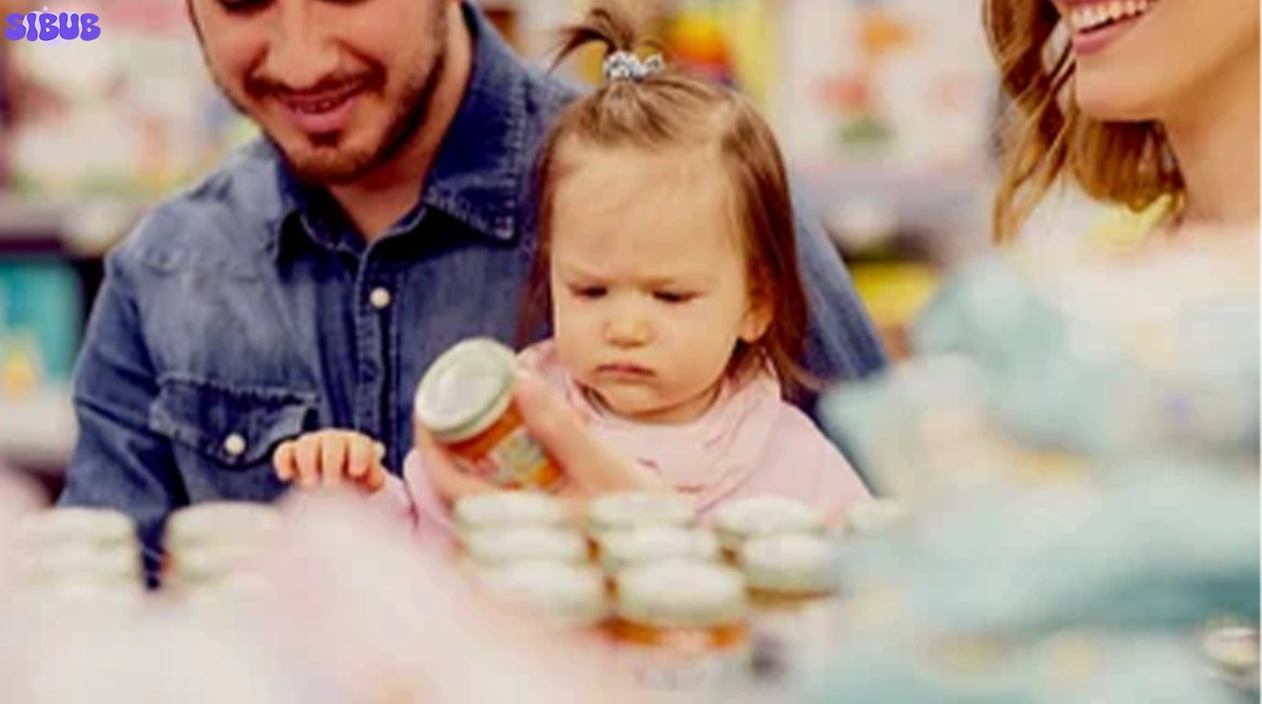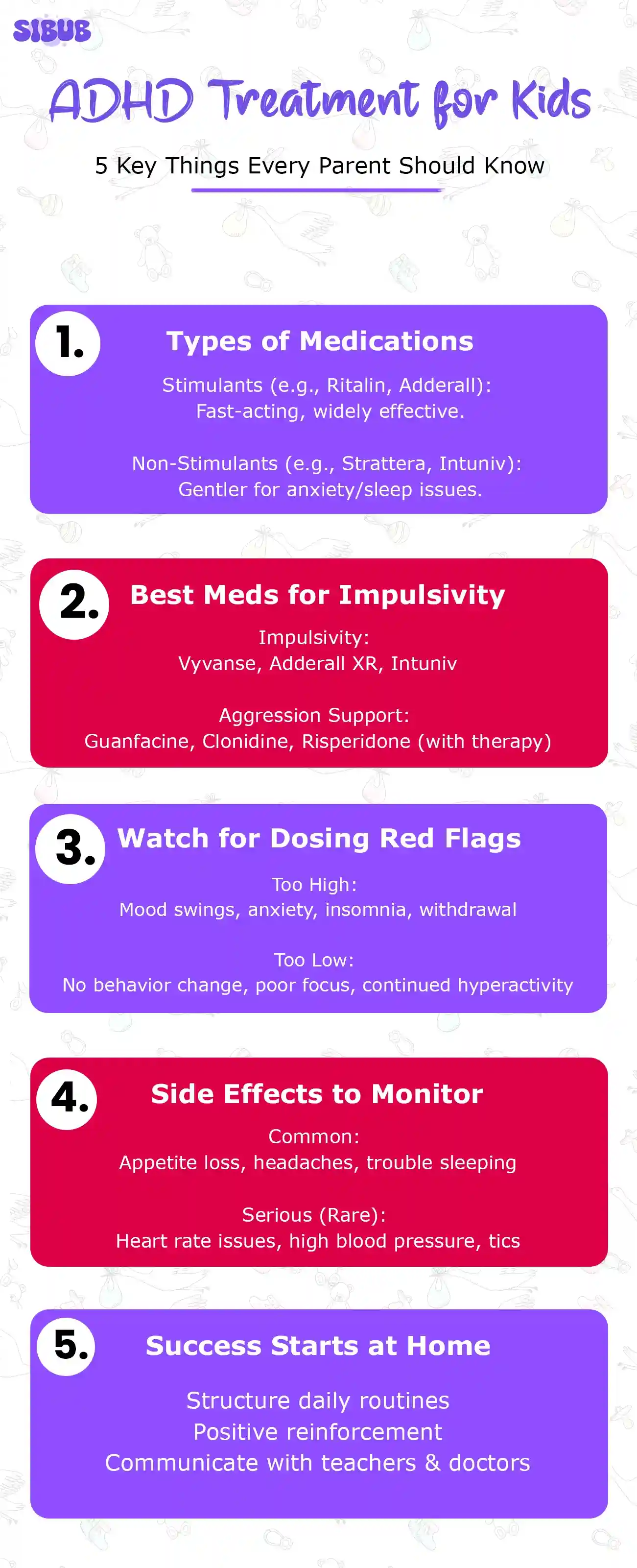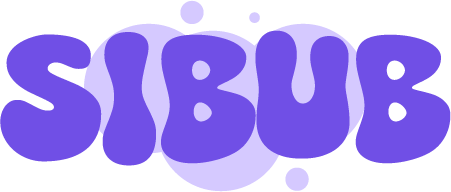“Parenting a child with ADHD is not about finding a cure; it’s about what works.”
Envision being in a perfectly quiet room, and notice how your child is completely absorbed. Many parents hope for such moments. Handing out a beautiful break is what everyone wishes for. Out of all the wishes, sending ADHD flying away will be one of them.
Therapy, along with a change in diet, is usually recommended as part of ADHD treatment for kids, but they often seem too troublesome for busy parents. Understanding the drawbacks along with the right cues makes life much simpler. ADHD medicine for kids becomes part of the family’s daily life.
In this guide, you’ll learn about the different types of ADHD medicines. How dosages work, how to spot problems with the dose, and what to do if things suddenly change.
What Is ADHD?
ADHD stands for attention-deficit/hyperactivity disorder. It is a disorder that impairs some brain functions associated with focus, self-regulation, and physical activity. Among children, this is one of the diseases in mental health diseases that is rampant.

Visit: Explaining Santa: Is Santa Real and How to Break the News Kindly
Every child is born with the ability to learn and absorb everything that is around them. From the moment they open their eyes, all they want is to see something new, move, or think endlessly. But for some particular reason, children with ADHD have difficulty concentrating. They remain seated still, or don’t have control over their impulses.
ADHD is split into three primary types:
- Inattentive Type: Has concentration difficulties, forgets things, and makes mindless mistakes.
- Hyperactive-Impulsive Type: Shows signs of fidgeting, over-talking, and acting on impulses.
- Combined Type: Displays symptoms of both inattentive and hyperactive-impulsive behaviors at the same time.
ADHD Treatment For Kids: Types Of Medications
ADHD medication myths could be corrected by stating something clear. There is no single medicine for all ADHD cases. ADHD medicine for kids will depend on symptoms, age, history, doctor visits, and how the child responds.
Medications are grouped into two categories:
Stimulant Medications
When working with children with ADHD, the preferred course of action for practitioners is to start them on stimulant medications. These medicines optimize neurotransmitters such as dopamine and norepinephrine. Consequently, children are able to focus more, pay better attention, and control themselves more easily.

Commonly used stimulants:
- Methylphenidate: Ritalin, Concerta
- Amphetamine: Adderall, Vyvanse
Most children quite readily respond to stimulants which take effect within approximately half an hour. As is the case with any ADHD drug, stimulants have side-effects. Less appetite, more insomnia, and more sensitive to emotions – all of this happens.
Discover: Top Benefits of Summer Camp for Kids
Non-Stimulant Medications
If stimulants aren’t a good choice for your child, non-stimulant ADHD meds for kids might be a better option. These can be helpful if you experience too many side effects from the stimulants. Also, if a child has concurrent anxiety or sleep issues.
Non-stimulant ADHD medications include:
- Atomoxetine: Strattera
- Guanfacine: Intuniv
- Clonidine: Kapvay
Non-stimulants affect the brain differently by targeting norepinephrine and other neurotransmitters. These medications work gently, which is useful for emotionally sensitive children and those with other mental health concerns.
To treat ADHD successfully in children, finding the right mix of stimulants and non-stimulants is crucial.
Best ADHD Meds for Impulsivity
Arbitrarily acting without thinking is often an impulsivity symptom of ADHD, which usually proves very disruptive. It results in reckless behavior, disturbances in the classroom, and quarrels with classmates.
Vyvanse, Adderall XR, and Intuniv are the most effective ADHD medications for reducing sudden movements. Stimulants act quickly to facilitate better self-control, while non-stimulants need time, but aid in emotional centering and cutting down on impulsive behavior.

Explore: Hypothalamus Function: Hormones, Homeostasis and More
In order to have the best results, doctors frequently use medication in conjunction with behavioral therapy, such as CBT, to treat ADHD.
ADHD And Aggression Associated Medication
Aggression is not a characteristic of ADHD but is often associated with the disorder. There’s often frustration and emotional dysregulation, and short fuses and impulsivity can certainly lead to choleric-type outbursts, and perhaps aggression.
Guanfacine and Clonidine are the major antidopaminergic agents utilized in aggression in ADHD. These drugs work by being sedative. Severe cases can be managed with atypical anti-psychotics, for instance, Risperidone.
While ADHD aggression medication is not the first line of defense, it can go a long way in conjunction with therapy. These anger management drugs can interfere with safety or learning. However, absorbing it back is advisable. Always combine with therapy and behavioral approaches.
Learn More: 120 Self Love Affirmations to Boost Self-Esteem
Identifying Dosing Problems
It is exceptionally difficult to ascertain the appropriate dose of medication for ADHD treatment in children. Each child is distinct, so their response to medication may vary. The problems stem from both overmedication and undermedication.
Signs Of ADHD Medication Dose Is Too High In Children
Increased anxiety, disruptive sleeping patterns, erratic shifts in mood, and heightened social withdrawal. A parent might observe that their child appears more withdrawn and unusually quiet, displaying irritability and disinterest towards previously enjoyed activities.
Those are very strong signs to suggest the medication has a stronger effect than intended. Often, these children need to see their healthcare provider. Their condition can often be improved and their balance restored with a modest reduction in dose.
Signs Of ADHD Medication Dose Is Too Low in Child
Modate impulsive behavior, and a lack of improvement in academic or social tasks. Some children might struggle with attention and hyperactivity despite being on medication. In such instances, the dosage is likely not sufficient to control their symptoms.
For whatever the issue you’re targeting, a daily behavior chart allows you track changes and spot patterns. Discussing it with your doctor will enable them to make more appropriate medication adjustments. Starting with a smaller dose makes it easier to find the optimal dose that manages the ADHD symptoms well, while preventing you from getting strong side effects.
Check this out: Emotions Wheel for Kids: Benefits and How to Use
Concerta Stopping Signs
Concerta is one of the most common long-acting stimulants. But sometimes it stops working.
Signs to look for:
- Symptoms relapse by midday
- Emotional meltdowns
- Spike in Restlessness
- Increased distractibility, or increased fidgeting
A dosage change or a change to a different medication might be needed.
Anticipated Reactions You Should Prepare Yourself For
While medications can be helpful and make life easier, it’s important to use them wisely. They may have short-term, medium-term, or even long-term effect.
Hyperactivity Medication Side Effects
- Headaches
- Appetite Loss
- Difficulties In Falling Asleep
- Emotional Instability
All of them can be resolved with some clever adjustments in the timing or by switching the formulas used.
ADHD Medicine Side Effects
Less frequent but more serious reactions include:
- Tightening of heart rate control
- Elevated heart rate
- Muscle spasms
- Elevated blood pressure
These are very specially controlled. Make sure you receive constructive feedback from your healthcare professional so that this information can be adjusted to your particular needs.
Which ADHD Medications Work Best?
Your answer will differ from others. The best ADHD treatment for kids is contingent upon the child’s symptoms, medical history, and their overall physiology.
The CDC reports that 70–80% of kids respond well to stimulants. For children suffering from anxiety, tics, or poor sleep, non-stimulant ADHD medication may be preferable.
Supporting ADHD Treatment For Kids at Home
Medication does not solve problems. It works best alongside a supportive and structured home atmosphere.
Strategies that assist in achieving success
- Establish a daily routine.
- Implement physical schedules.
- Give clearly defined appreciation for good behavior.
- Maintain open lines of communication with the child’s teacher and other medical professionals.
Conclusion
Finding an appropriate ADHD treatment for kids is not a sprint but rather a carefully coordinated journey. It necessitates the evolution of parents, physicians, and teachers. When targeted toward a child’s defined needs, medications can yield transformative advantages. Assistance is available for a child’s impulsivity, aggression, and focus issues. The proper caring methods, alongside the use of stimulants and non-stimulants prescribed for ADHD, can greatly help reduce the problems.
Understanding the healthcare system requires parents to actively track key indicators and reinforce dialogues with relevant professionals. Detailing doses deemed to be excessively high or low. Side effects, while likely to occur, are often manageable, especially with adequate support. Simply put, medication is optimized alongside structure, emotional guidance, and unconditioned empathy.
Hope is a necessity, and remaining informed proves equally as important. In the grand scheme of health, medication is most beneficial when paired with supportive elements. These include empathy and provide structure bolstered by unconditional regard.
Every child deserves the opportunity to thrive.
